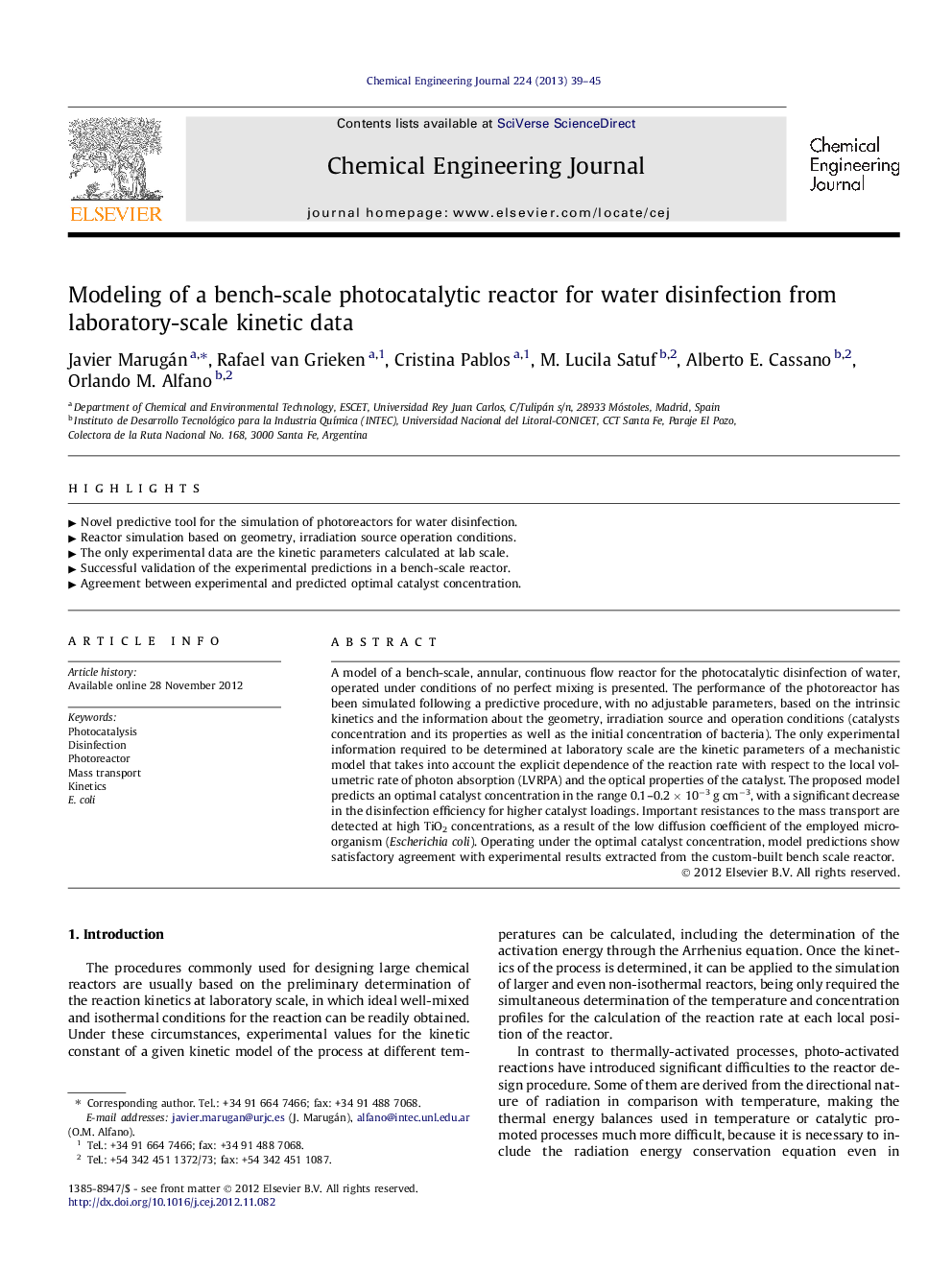| Article ID | Journal | Published Year | Pages | File Type |
|---|---|---|---|---|
| 148499 | Chemical Engineering Journal | 2013 | 7 Pages |
A model of a bench-scale, annular, continuous flow reactor for the photocatalytic disinfection of water, operated under conditions of no perfect mixing is presented. The performance of the photoreactor has been simulated following a predictive procedure, with no adjustable parameters, based on the intrinsic kinetics and the information about the geometry, irradiation source and operation conditions (catalysts concentration and its properties as well as the initial concentration of bacteria). The only experimental information required to be determined at laboratory scale are the kinetic parameters of a mechanistic model that takes into account the explicit dependence of the reaction rate with respect to the local volumetric rate of photon absorption (LVRPA) and the optical properties of the catalyst. The proposed model predicts an optimal catalyst concentration in the range 0.1–0.2 × 10−3 g cm−3, with a significant decrease in the disinfection efficiency for higher catalyst loadings. Important resistances to the mass transport are detected at high TiO2 concentrations, as a result of the low diffusion coefficient of the employed microorganism (Escherichia coli). Operating under the optimal catalyst concentration, model predictions show satisfactory agreement with experimental results extracted from the custom-built bench scale reactor.
► Novel predictive tool for the simulation of photoreactors for water disinfection. ► Reactor simulation based on geometry, irradiation source operation conditions. ► The only experimental data are the kinetic parameters calculated at lab scale. ► Successful validation of the experimental predictions in a bench-scale reactor. ► Agreement between experimental and predicted optimal catalyst concentration.
